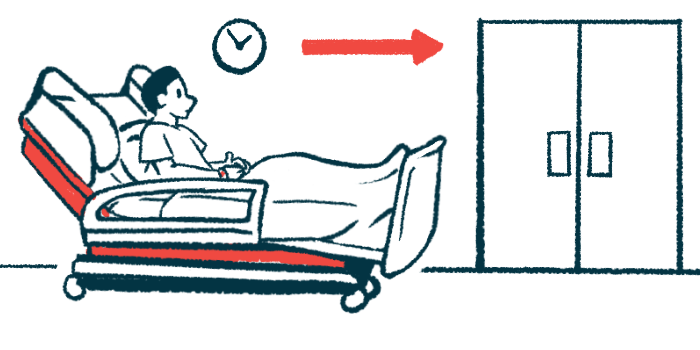Adverse outcomes common after ankylosing spondylitis hospital stay
Nearly half of patients are discharged to different facility or readmitted
Written by |

Nearly half of patients admitted to the hospital for ankylosing spondylitis (AS) are discharged to somewhere other than home or return to the hospital within three months, according to a study from over 150 hospitals under HCA Healthcare.
Receiving medications such as opioids and steroids during a hospital stay were among the factors that stacked the odds against being discharged home, whereas having a surgical procedure, among other factors, increased the odds of being readmitted.
Knowing what boosts favorable outcomes after a hospitalization can guide doctors to make better decisions and develop tailored plans toward a more successful hospital stay and a smoother recovery after discharge, said the study’s researchers.
“Recognizing factors that put patients with AS at risk of unfavorable outcomes is useful information to improve patient care during hospitalization,” wrote researchers from Las Vegas’ Mountain View Hospital, part of the HCA Healthcare network, in “Characteristics and Hospital Outcomes of 1403 Patients Hospitalized at Community Hospitals With Ankylosing Spondylitis,” which was published in the HCA Healthcare Journal of Medicine. The study was supported by HCA Healthcare.
AS mainly occurs in the joints of the spine, causing a range of symptoms — from pain and stiffness in the lower back to severe disability due to injury to the spinal cord. It can also lead to inflammation in other joints, such as the hips and knees.
The condition’s symptoms can make hospital stays complicated and lead to additional care needs or more hospital visits, but there’s little information about how patients fare during hospital stays or what affects their outcomes after they’re discharged from the hospital.
Outcomes after hospital stay for AS
To know more, the researchers drew on data from 1,403 adults admitted to the hospital for AS from 2016 to 2021, checking who went home without needing to return within three months and who was discharged elsewhere or had to come back.
The patients were in the hospital for an average 3.7 days. Their mean age was 56.1 and over half (56.8%) were men. Most (82.5%) were discharged home after treatment, most frequently for hip or knee joint replacement (7.8%) or back problems (5.3%).
Among the 246 patients who weren’t discharged home, 102 (7.3%) went to nursing facilities, 84 (6%) went to rehabilitation units, and 27 (1.9%) left against medical advice. Two died.
The proportion of patients who returned to the hospital within three months was higher among those who weren’t discharged home (48.4% vs. 35.3%) and the readmission rate was particularly high for those discharged to inpatient rehabilitation units (66.7%).
Those who had unfavorable outcomes, such as being discharged somewhere other than home or being readmitted within three months, were an average four years older than those with favorable outcomes, that is, being discharged home without having to be readmitted. These patients were more frequently non-Hispanic or Latino (94.2% vs. 90.1%), were covered by Medicare or Medicaid (60.2% vs. 47.5%), and on average had more coexisting medical conditions (2.6 vs. 2) than those who had favorable outcomes.
On average, the patients with unfavorable outcomes stayed longer in the hospital (4.4 vs. 3.1 days) and were more likely admitted to the intensive care unit (14.9% vs. 8.5%) than those with favorable outcomes.
Opioids, used as painkillers, were the most commonly prescribed medication during a hospitalization (71.4%). Both opioids and benzodiazepines, a sedative that eases muscle spasms, were more commonly used by patients with unfavorable outcomes.
A history of falls, Medicare or Medicaid coverage, and anemia, or shortage of red blood cells, or hemoglobin, after a bleeding episode were linked to decreased odds of being discharged home, as were using acetaminophen (also known as paracetamol), steroids, or muscle relaxants, and higher doses of morphine or an equivalent.
Using nonsteroidal anti-inflammatory drugs (NSAIDs), usually the first-line treatment for AS, increased by nearly four times the odds of being discharged home. NSAIDs were used more frequently by those who achieved favorable outcomes, the researchers said.
Having surgery during the hospital stay, gastrointestinal problems, taking benzodiazepines, and going to a rehabilitation unit after being discharged all increased the odds of needing to return to the hospital within three months.
“This study provides a snapshot of the hospital course for patients with the primary admitting diagnosis of AS,” the researchers wrote. “Recognizing patients at risk … could be an initial step to prevent readmission, a vital accountability measure for the quality of hospital care by the public payer.”



